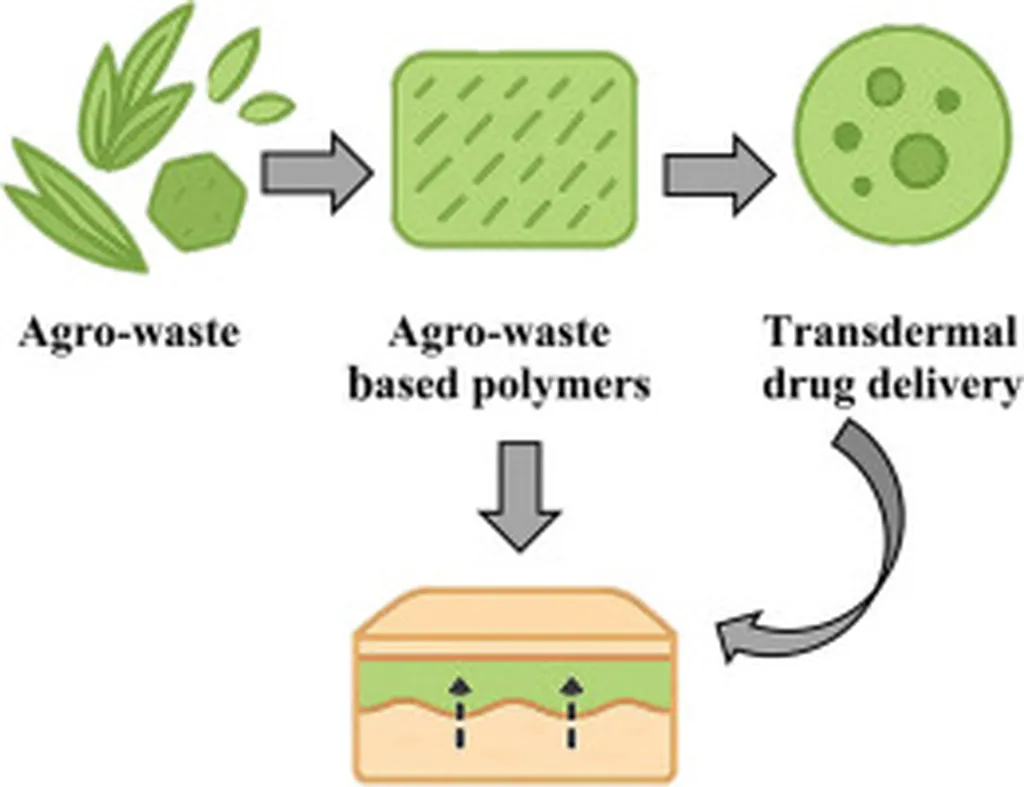In a world grappling with environmental crises, the pharmaceutical industry is stepping up to the plate, and a groundbreaking review published in the journal *Sustainable Chemistry for Climate Action* (translated from Thai as “Chemistry for a Sustainable Future”) is shedding light on a promising avenue: agro-waste-based polymers for transdermal drug delivery. Led by Pattwat Maneewattanapinyo from the Department of Pharmaceutical Chemistry at Rangsit University in Thailand, this research is not just about advancing healthcare; it’s about doing so sustainably.
The review highlights how agricultural waste—materials often discarded or underutilized—can be transformed into high-performance polymers for drug delivery systems. “We’re talking about cellulose, chitosan, starch, pectin, lignin, and plant mucilage,” Maneewattanapinyo explains. “These natural materials are not only biocompatible and flexible but also offer controlled drug release through the skin.” This innovation addresses a critical gap in the industry, where synthetic polymers have long been the standard despite their environmental drawbacks.
The implications for the energy sector are significant. As the world shifts toward renewable and sustainable resources, the pharmaceutical industry’s adoption of agro-waste-based materials could set a precedent for other sectors. “By repurposing agricultural by-products, we’re contributing to a circular economy,” Maneewattanapinyo notes. “This reduces waste, lowers toxicity risks, and supports climate action goals.” The review discusses various applications, from patches and films to hydrogels and microneedles, demonstrating that these natural polymers can compete with—or even outperform—traditional synthetic materials.
However, the journey isn’t without challenges. Ensuring consistent quality, navigating regulatory hurdles, and scaling up production are real-world obstacles that the industry must tackle. Yet, the potential is immense. “Future opportunities include smart technologies and AI-assisted formulation,” Maneewattanapinyo adds, hinting at a future where technology and sustainability intersect seamlessly.
This research isn’t just about creating greener drug delivery systems; it’s about redefining what’s possible when we think creatively about waste. As the world continues to grapple with climate change, innovations like these offer a glimmer of hope, proving that sustainability and performance can go hand in hand. The review, published in *Sustainable Chemistry for Climate Action*, serves as a call to action for industries to embrace circular economy principles and pave the way for a more sustainable future.

